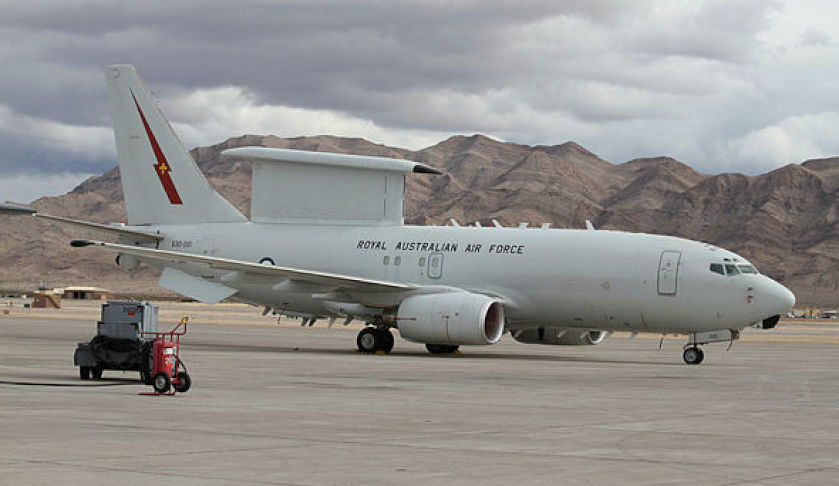RAAF personnel have deployed to Nellis Air Force Base in Nevada for Exercise Red Flag 17-1, where they will train in the world’s most complex air combat environment.
For Exercise Red Flag 17-1, the RAAF has deployed Boeing made E-7A Wedgetail Airborne Early Warning and Control aircraft and a Lockheed Martin made C-130J Hercules transport.
200 RAAF personnel will support and participate in missions involving up to 100 aircraft, flying over 31,000 square kilometres of the Nevada desert, alongside their counterparts from the US and the UK.
One essential and significant aspect of the training focuses on personnel who are embedded within the Combined Air and Space Operations Centre, with RAAF personnel leading this key command and control node. This is the first time a coalition nation has performed this role during a Red Flag exercise.
RAAF Contingent Commander and Director of the Exercise Red Flag 17-1 Combined Air and Space Operations Centre, Group Captain Stuart Bellingham said Australia’s involvement in the exercise is crucial in allowing their coalition to see how they function.
“Australia’s participation in Exercise Red Flag will enable coalition partners to better understand how we operate, and likewise consolidates our strong working relationships,” said GPCAPT Bellingham.
Exercise Red Flag 17-1 will involve the US Air Force’s Lockheed Martin built F-35A Lightning II, and the US Navy’s Boeing built E/A-18G Growler, both of which are about to enter Australian service.
GPCAPT Bellingham said this exercise is the perfect opportunity for RAAF personnel to learn and experience how these aircraft will be used in larger missions and the role they will play in future missions.
“This exercise is an ideal environment for our personnel to experience how the Growler and F-35A are integrated within a larger mission,” said GPCAPT Bellingham.
“Both aircraft will provide new capabilities to the Australian Defence Force, and will play an important role for RAAF’s future operations.”
Exposure to these technologies utilised in a modern battlespace will enable the RAAF to develop its people and techniques as it introduces more advanced air power capabilities under Plan Jericho.
GPCAPT Bellingham also highlighted the importance of the Red Flag training environment, which is unrivalled for its complexity and realism, as well as its ability to prepare RAAF personnel for ever evolving threats.
“Since RAAF personnel first participated in Exercise Red Flag in 1980, this exercise has informed both how we train our people and develop our air power,” he said.
“Modern air operations must overcome not only ground and airborne threats, but also attacks in the electronic spectrum and the cyber space domain.
“Exercise Red Flag was established by the United States Air Force to provide personnel with an experience of modern combat operations, and show them how to overcome the threats they might face.”
Air Battlespace Managers from RAAF’s No. 41 Wing are also participating in the exercise and will control missions with up to 100 aircraft at a time in the exercise.
A Combat Control Team from No. 4 Squadron, whose job it is to ensure aircraft can seamlessly deliver support to ground forces during the exercise, are also involved.



